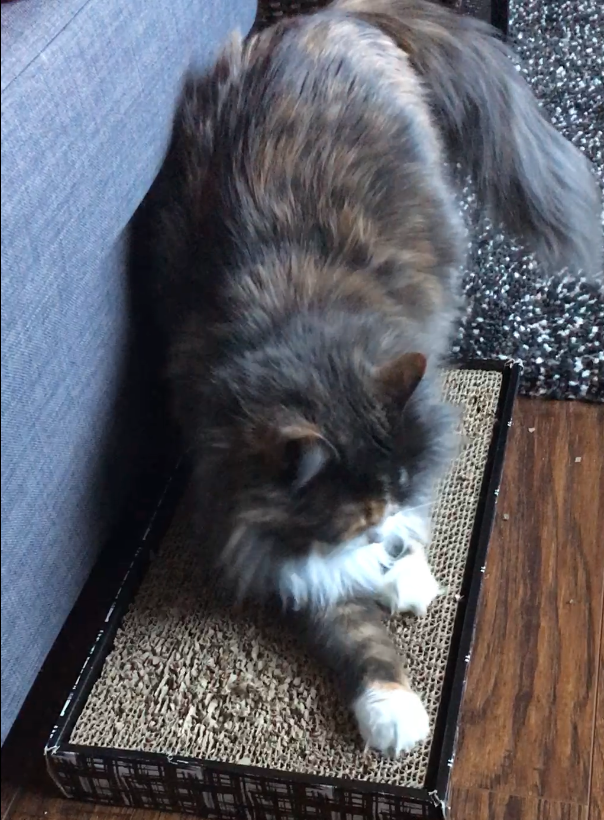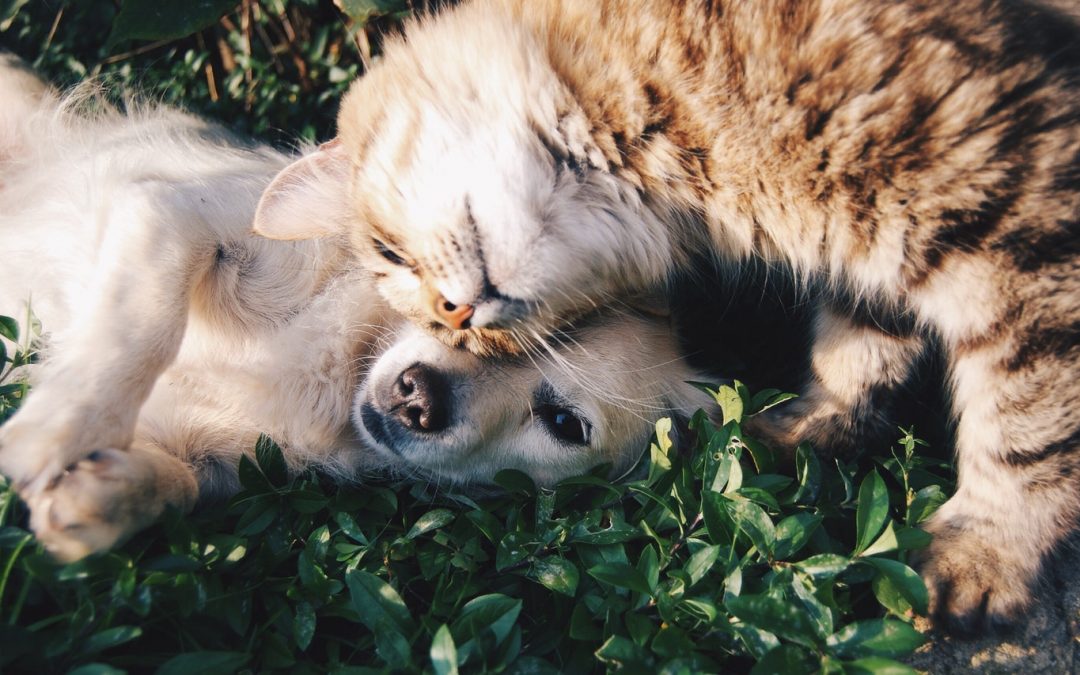Pets are cherished members of our family, essential for companionship and improving our health/ well-being. Just as we generate a lot of waste, our pets have a large ecological “paw print” of their own. Being a pet owner doesn’t have to drastically impact our household carbon footprint if we make responsible decisions. We hope you find the following tips helpful for maintaining a eco-friendly household with your furry friends!
1) Adopt: Finding a pet in need of a good home from your local shelter is much more sustainable and humane option than buying one from a pet store or breeder. Many of the animals raised to be sold in stores are transported from afar, and often come from unhealthy sources (i.e. puppy mills). Transporting pets to stores or travelling out of town to visit a breeder increases our carbon footprint, when we could cut travel down significantly by visiting our local pet shelter. By adopting from a local shelter, you are helping the shelter rescue and help other animals, as well as running local programs such as the Winnipeg Humane Society’s Barn Buddies/Warehouse Cats program. PetFinder can help you locate pets at shelters in your area!
2) Spay and neuter: There is an overabundance of pets without homes. According ASPCA, 1.5 million animals are euthanized each year because shelters cannot support the number of incoming pets. To curb overpopulation and unnecessary euthanization, it is best to spay or neuter your pets.
3) Responsible food choices: One of the largest contributing factors to your pet’s ecological “paw print” is their food. Sustainable living experts Robert and Brenda Vale suggest in their book “Time to Eat the Dog? The Real Guide to Sustainable Living” that a medium-size dog could have a similar footprint to a large SUV, largely because of food consumption and the pet food industry. According to a recent study, cats and dogs are responsible for 25-30% of the environmental impact of meat consumption in the United States. Try your best to feed your pets healthy, organic, environmentally-conscious food brands made by responsible companies (and be sure not to overfeed them!). Also be mindful of pet food packaging. Focus on buying food in bulk or recyclable packaging (with as little plastic as possible). When storing food and treats, use a washable and reusable storage container instead of a plastic bag.
4) Reducing the waste: Pet waste can have a negative effect on the environment, by spreading diseases to other pets and wildlife, contaminating water sources, adding methane from the landfill, and leaving landmines for others to dodge on sidewalks and in parks. See our blog post for what to do with doggie doo-doo “ (including using compostable doggie bags)! Cat litter, on the other hand, can be a little trickier to deal with. The best option to date is opting for biodegradable litter options, including old newspapers, wood shavings, nut shells and wheat.

5) Eco-friendly supplies: Before shopping for a new leash, collar, kennel, bowl, etc. look for it second-hand or ask your family and friends first. If you do have to buy new supplies, look for ones made from recycled or natural-based materials, like this cardboard cat scratcher (made of recycled material and is recyclable itself). Do you like crafting or DIY? Try making your own pet toys using household materials, like these t-shirt cat toys and dog toys. Instead of throwing out items that your pet doesn’t use or no longer needs, consider donating them to a local shelter! Give them a call to see if they accept the items you have, or organize a swap with friends or family.
6) Hygiene: Reduce the chemicals in your home by making your own cleaners and deodorizers when cleaning up after your pet. Use towels or rags instead of paper towels, and if you do use a paper towel, remember to compost it afterwards. When bathing your pets, be mindful of your water consumption and use natural/ homemade bathing products!
7) Getting around town: Challenge yourself to use a more sustainable mode for getting your pets around. Pets in small carry-on containers are allowed on Winnipeg Transit buses, provided owners can safely store it while on-board. Green Action Centre staff get their pets around using bike carriers, bike baskets, and even cross country skis! If you do need to take your pet somewhere by car, trip-chain by running errands during the trip. Do you drive to a dog park just to walk around? Look for closer parks and nature trails, or arrange walks and play dates with your friends’ pets instead!

Sources:
inhabit.com, Top Tips for Raising Your Pet in a Sustainable Way
The Conversation, A big pawprint: The environmental impact of pet food
Groundswell, Kitty, Litter Not! 6 Cheap Ways to Reduce Your Pet’s Environmental Impact
Petful, 19 Ways That People Who Have Pets Can Be Eco-Friendly
1 Million Women, How To: Be A Sustainable Pet Owner
Treehugger, How to Go Green: Pets
Treehugger, 7 tips for eco-friendly pet owners
Open Farm, 6 Ways to be an Eco-friendly Pet Owner
The Guardian, Are pets bad for the environment?




Thanking you for sharing great pet tips. I have planning to adopt a dog for that, these tips will really help me to maintain an eco-friendly household for the pet.
Wow! What an informative & instructive post. It’s really important to know for a puppy owner. Really great one! Thanks a lot for sharing your great thoughts.
I have two dogs in my house so I am very thankful to be here. I will follow your mentioned tips and hopefully these will help me to me make a Eco friendly environment in my house for my pets. Thanks
Thank you for your excellent tips. I love the way you explained these with simplicity so that everyone can easily follow them. It’s true that we need to be more eco-friendly and out dogs also can adapt to the changes. Going organic is an excellent way to do that. Many forget that pets also leave a paw print in this world and with responsible choices, we can easily maintain an eco-friendly household.
A friend tells me that you can also get corn-based cat litter – perhaps another good eco-friendly option!
One great cleaning tip: if your dog pees on the floor, use white vinegar to clean it up. The vinegar smell will cover up the smell of pee and make it less likely that your dog (or a visiting pup) will smell the urine and repeat-offend! Plus, white vinegar comes in bulk and is very eco-friendly.